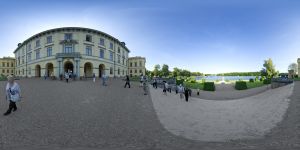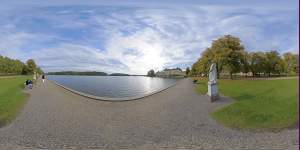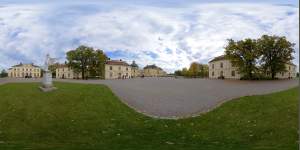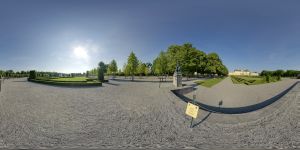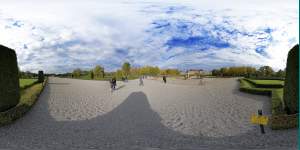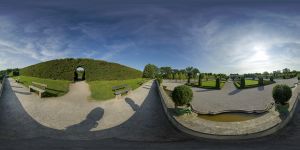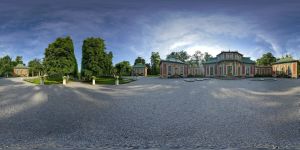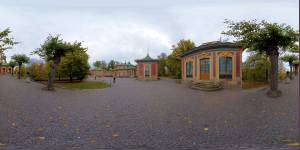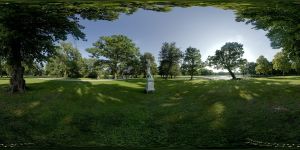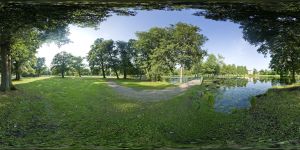

Currently 12 Panoramas in This Gallery
Unesco's Description:
The Royal Domain of Drottningholm stands on an island in Lake Mälar in a suburb of Stockholm. With its castle, perfectly preserved theatre (built in 1766), Chinese pavilion and gardens, it is the finest example of an 18th-century north European royal residence inspired by the Palace of Versailles.
Drottningholm palace park, a Unesco world heritage.
The Royal Domain of Drottningholm stands on an island in Lake Mälar in a suburb of Stockholm. With its castle, perfectly preserved theatre (built in 1766), Chinese pavilion and gardens, it is the finest example of an 18th-century north European royal residence inspired by the Palace of Versailles.
The Drottningholm Palace is the private residence of the Swedish royal family. It is located in Drottningholm. It is built on the island Lovön (in Ekerö Municipality of Stockholm County), and is one of Sweden's Royal Palaces. It was originally built in the late 16th century. Apart from being the private residency of the Swedish royal family, the castle is a popular tourist attraction.
The Chinese Pavilion, together with Drottningholm Palace and its grounds, is on UNESCO's World Heritage List.
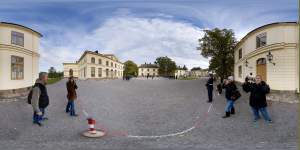
Drottningholm Palace (Changing of the Royal Guards)
Changing of the Royal Guards is a several hunderd years old ceremony during which the guards of the Royal Family or its palaces are changed. Here you can see it at Drottningholm Palace grounds just outside Drottningholm Palace Theatre.
The 18th-century Court Theatre at Drottningholm is on the "world heritage" list.
The building was completed in 1766 and rests on the remains of an earlier theatre destroyed by fire in 1762.
Closest to the palace lies the parterre de broderi, which originally had an intricate embroidery pattern of box-wood hedges and coloured gravel.
Today, these have been replaced by a large lawn with box-wood hedges on the outer edges as well as a band of crushed brick and black hyperite.
The park and gardens at Drottningholm have been developed in three stages, inspired by three main styles.
The oldest garden was planted at the end of the 1600s upon the initiative of Queen Hedvig Eleonora. At the centre stands the Hercules fountain - bronze figures created by the sculptor Adriaen de Vries. After a walled terrace comes the parterre d'eau with ten jets of water and lawns enclosed by box-wood hedges.
Beyond the cascades lie four hedge groves and the crown fountain. Today the groves remain as they were formed during the 1700s.
The southwest grove contains a theatre of leaves, with hedges forming the walls and stage.
During the summer concerts are held at this outdoor venue.
The Chinese Pavilion (or in Swedish "Kina Slott") is a small Chinese pleasure pavilion in the Drottningholm Palace park, built in the 1760s as birthday gift from King Adolf Fredrik to Queen Lovisa Ulrika.
The Chinese Pavilion (1766) in the Drottningholm Palace park was built for Queen Luise Ulrike as a summer residence; the interior shows a mingling of French Roccoco and Chinoiserie. Nearby is the
little settlement of "Canton" (1750-60), built to house the craftsmen making furniture and wallpaper for the Chinese Pavilion..
The Chinese Pavilion (or in Swedish "Kina Slott") is a small Chinese pleasure pavilion in the Drottningholm Palace park, built in the 1760s as birthday gift from King Adolf Fredrik to Queen Lovisa Ulrika.
The Chinese Pavilion, together with Drottningholm Palace and its grounds, is on UNESCO's World Heritage List.
Viewing paths stretch through the English garden and partly through the baroque garden providing beautiful viewpoints and landscape vistas.
Only a few of all the romantic buildings that were planned for the English garden were completed
Copies of ancient marble statues are found at a number of locations in the park. The originals were purchased by Gustav III during his journey to Italy in 1783-84.
The intention was to provide beautiful surprises amongst the foliage or a visual endpoint from a distance.

